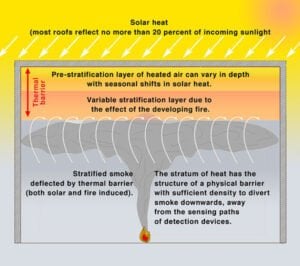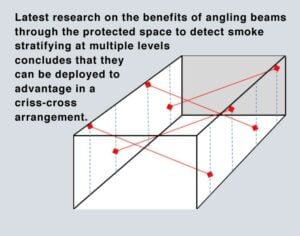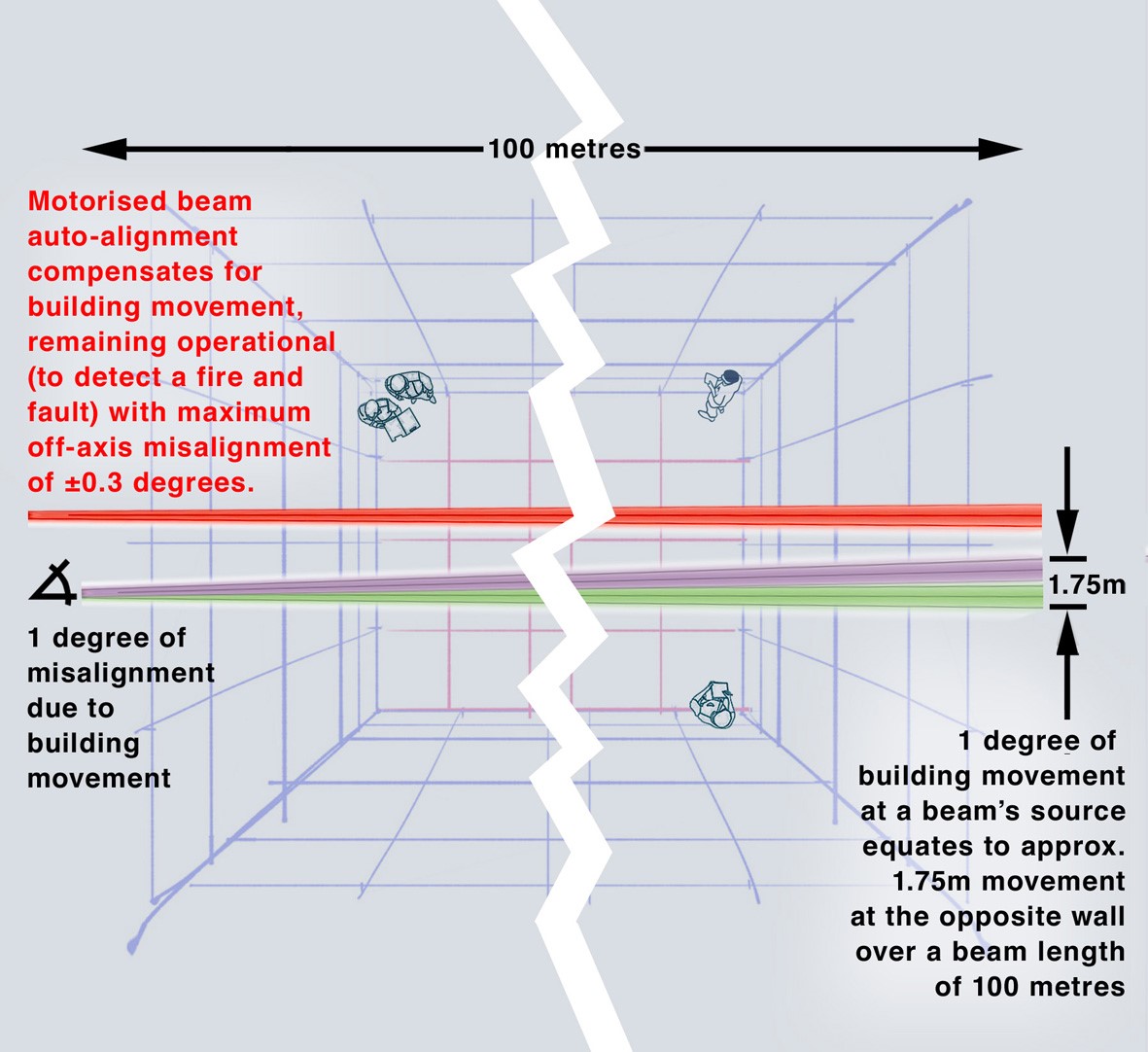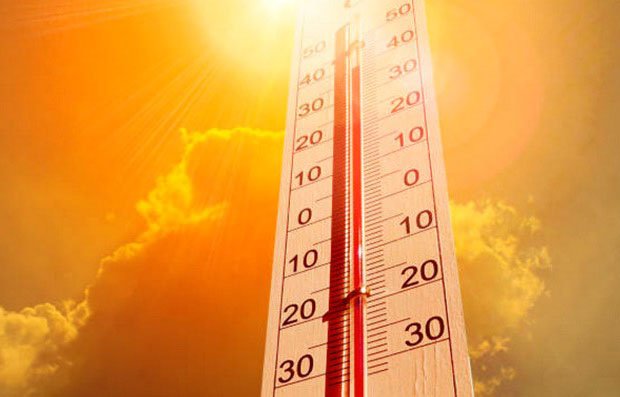As risk managers will be aware, warnings from across the globe that the past decade has been the hottest on record due to persistent heatwaves are prompting fire safety specialists to focus on the implications for fire detection when buildings are under high levels of thermal stress.
To grasp the gravity of new threats posed by global warming, consider the scenario of protecting a building with an open volume of 100 metres length (twice the length of an Olympic-sized swimming pool), while rising temperatures can significantly affect structures by causing them to expand by day and contract at night. Hunter Seymour investigates the issue and highlights what fire professionals may need to be taking into consideration for optical beam detector design and installation.
Although such expansion and shrinkage is estimated at the design stage, consider that, theoretically, a temperature variation up to 40°C could result in a thermal expansion of 5cm over 100m of concrete wall.
Therefore, where optical beam smoke detection is the most practical technology of choice, it is of critical consequence for system designers to recognise that just 1 degree of beam misalignment due to building movement over 100m equates to approximately 1.75m movement at the opposite wall (when viewed over the length of the beam from source).
Smoke stratification impacted by solar heat

The challenges arise from what is known as a stratification layer. The hazard of a thermal layer forming above the a smoke plume is a phenomenon of a complexity resolvable only by smart innovations, since smoke particles are heavier than air and are carried upward by the warm air around them through cooler air, which cools the plume such that warm air, trapped by the ceiling, forms a thermal cushion preventing the smoke reaching the ceiling. The temperature of this layer of air can often exceed 50°C.
This issue is compounded when solar heat generates its own thermal barrier, which can add a pre-stratification layer of heated air with a density to augment the variable stratified heat due to the effect of a developing fire.
This ‘thermal barrier’ effect can be a direct cause of fire alarm inaction. Optical Beam Smoke Detectors should therefore be used for applications in which smoke stratification is foreseen due the structural conditions.
Supplementary angled beams to probe stratified smoke

The spacing recommendations for angled optical beam smoke detectors within the three-dimensional space below a ceiling are not fully systemised as a code of practice yet, and under review. However, while it is possible that a single angled optical beam smoke detector will eventually detect a spreading layer of stratified smoke, the installation of more beams, strategically positioned through the three-dimensional space, will provide a substantially better chance of detecting stratified smoke and reduce detection times. In general terms, for every one optical beam smoke detector at the ceiling a further two or three detectors angled through the space could be considered appropriate.
One additional recommendation from FIA (Fire Industry Association) research, which has not yet been incorporated into BS5839-1, is that when installing angled beams they can be deployed to advantage in a criss-cross arrangement. This is intended to ensure that the distance to a beam at any height is not excessive.


